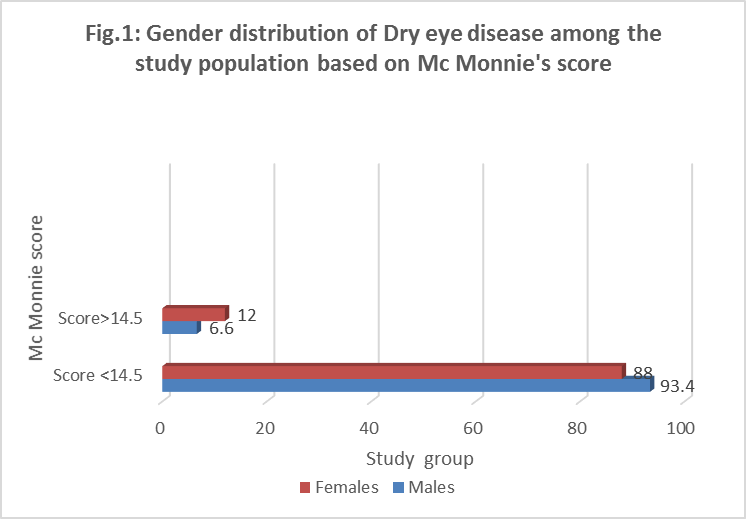Evaluation of Dry Eye Disease in Geriatric and Pre-Geriatric Middle-Aged Subjects Attending a Tertiary Care Hospital in Puducherry
Abstract
ABSTRACT
Purpose:
To determine the prevalence and risk factors of dry eye disease in Geriatric (>65 years) and Pre-geriatric (40-65 years) populations and to compare the same between both the groups.
Setting:
Indira Gandhi Government General Hospital and Post graduate Institute, Puducherry, India
Design:
Prospective, cross-sectional, clinical study
Methods:
All patients above 40 years attending the out-patient departments were given the Mc Monnie and Ho screening questionnaire for dry eye symptoms and risk factors. Those with a score of > 14.5 were further evaluated using Ocular Surface Disease Index (OSDI) severity subjective questionnaire, and objective clinical tests inclusive of Schirmer’s test, Meibomian Gland Dysfunction (MGD) assessment, Tear Film Break Up Time (TBUT), Fluorescein staining and Impression cytology. The prevalence, risk factors, clinical signs and symptom-sign correlation were determined and compared between the two groups.
Results:
Among the 1029 patients screened, the prevalence of dry eye was 9.9%, being significantly higher among the geriatric (15.4%) versus pre-geriatric group (7.7%), p<0.000, among women (12%) versus men (6.6%), p<0.000, among arthritic (22.8%) versus non-arthritic (9.6%), p=0.005, and among diabetic (30.4%) versus non-diabetic patients (3.4%), p<0.000. Geriatric patients had a greater prevalence of Grade 4 MGD (66%) versus pre- geriatric group (26.9%), p<0.000. TBUT scores were low (<10 seconds) in both groups and co-related with OSDI symptom severity scores (r=1).
Conclusions:
Aging, female gender, arthritis and diabetes were found to be significant risk factors. The Mc-Monnie and Ho questionnaire is a valid screening tool only for evaporative dry eye and is complemented by OSDI for screening in a hospital based setting.
